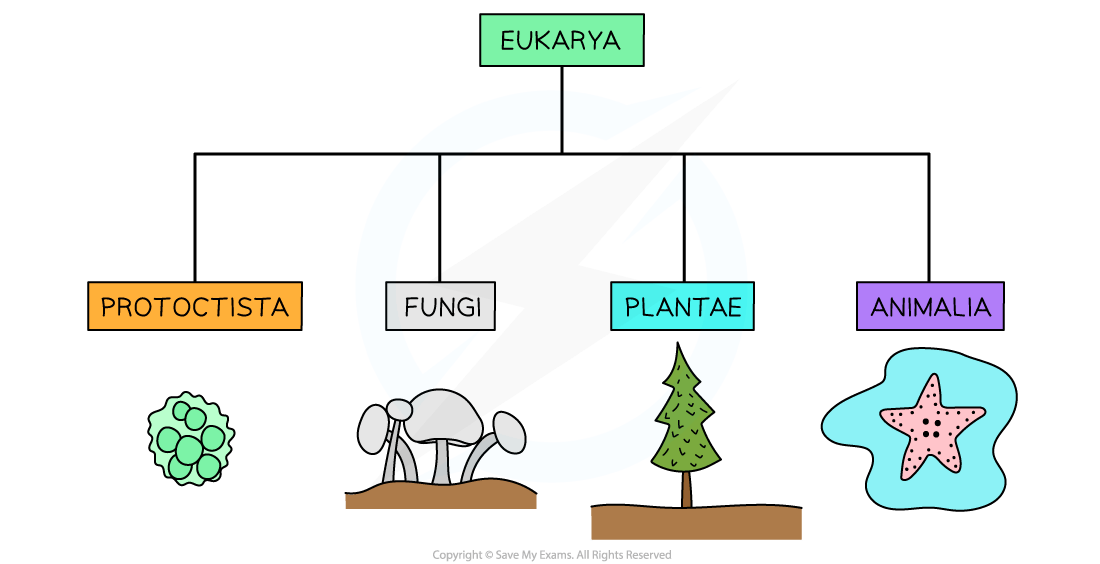Kingdoms (Cambridge (CIE) A Level Biology): Revision Note
Exam code: 9700
Kingdoms
The domain Eukarya can be divided into 4 kingdoms:
Protoctista (protoctists)
Fungi
Plantae (plants)
Animalia (animals)
Organisms from each of the four kingdoms have distinct characteristics and features
Although they share similarities:
They have cells with membrane-bound nuclei separating genetic material from the cytoplasm
They have compartmentalisation within their cells as a result of the presence of other organelles

Kingdom Protoctista
All Protoctista are eukaryotic, and this broad group of cellular life encompasses all eukaryotic cells that do not belong to the other three eukaryotic kingdoms
Members of this kingdom show great diversity in all aspects of life including structure, life cycle, feeding and trophic levels and well as modes of locomotion
Protoctists can exist as single-celled organisms or as a group of similar cells
A group of Protoctista known as protozoa possess cells similar to animal cells
Their cells have no cell wall
Another group of Protoctista known as algae possess cells similar to plant cells
Their cells have cellulose cell walls and chloroplasts
Kingdom Fungi
The oldest organism in the world is thought to be a fungus aged somewhere between 1500 - 10,000 years old
All fungi are eukaryotic cells
The cells of fungi:
Possess non-cellulose cell walls (often made of the polysaccharides chitin and glucans)
Don’t have cilia
Fungi are heterotrophs:
They use organic compounds made by other organisms as their source of energy and molecules for metabolism
They obtain this energy and carbon by digesting dead/decaying matter extracellularly or from being parasites on living organisms
Fungi reproduce using spores that disperse onto the ground nearby
Fungi have a simple body form:
They can be unicellular (like the common baker’s yeast Saccharomyces cerevisiae
Some consist of long threads called hyphae that grow from the main fungus body (mycelium)
Larger fungi possess fruiting bodies that release large numbers of spores

Kingdom Plantae
Plants are multicellular eukaryotic organisms
Plant cells:
All have cell walls composed of cellulose
Possess large (and usually permanent) vacuoles that provide structural support
Are able to differentiate into specialised cells to form tissues and organs
Possess chloroplasts that enable photosynthesis (not all plant cells have chloroplasts)
Can sometimes have flagella
They are autotrophs
This means they can synthesise their organic compounds and molecules for energy use and building biomass from inorganic compounds
Plants have complex body forms
They have branching systems above and below the ground
Kingdom Animalia
Animals are also multicellular eukaryotic organisms
Animal cells:
Are able to differentiate into many different specialised cell types that can form tissues and organs
Have small temporary vacuoles (for example, lysosomes)
Have no cell walls
Sometimes have cilia
They are heterotrophs
They have a wide range of feeding mechanisms
They have a wide range of body forms:
Communication within their complex body forms takes place through a nervous system and chemical signalling

Unlock more, it's free!
Did this page help you?